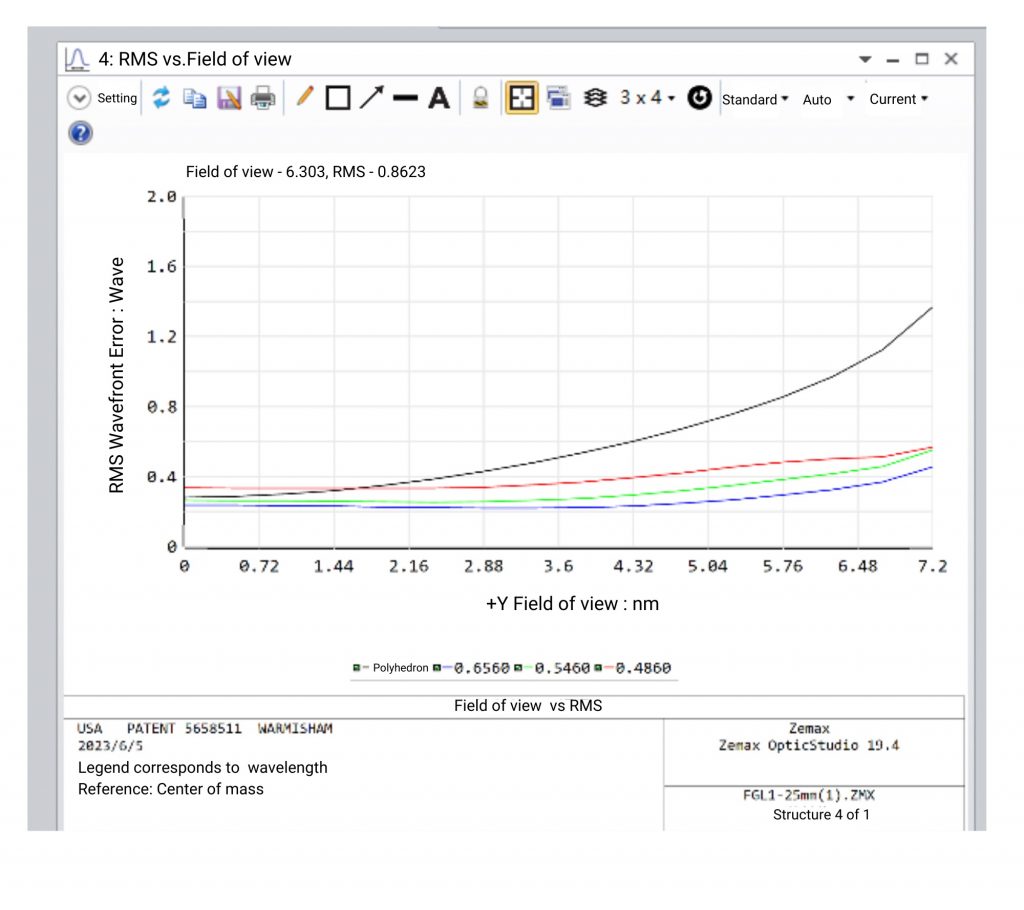At Avantier, we use Zemax for designing, analyzing, and optimizing optical systems, such as lenses, objectives, cameras, and other optical devices.
For optical system design, Zemax helps to construct a virtual optical system by defining optical specifications, such as surface curvatures, thickness, refractive indices, etc.
For ray tracing, Zemax simulates the propagation of light rays through the optical system and helps evaluate the imaging performance of the system.
For analysis, Zemax offers various analysis tools to evaluate, such as can calculate parameters like wavefront errors, MTF, etc.
For optimization, Zemax has the capabilities to improve performance, such as Zemax can automatically adjust the variables (like lens positions, and curvatures) to find the optimal configuration that meets the desired criteria after specifying optimization goals.
For tolerancing, Zemax allows performing tolerance analysis to assess the impact of manufacturing and alignment errors on system performance.
Optical systems have become an integral part of modern technology. They are used in everything from cameras and telescopes to medical equipment and automotive sensors. However, designing and manufacturing optical systems is no easy feat. Optical engineers face numerous challenges in the design and manufacturing process, including correcting optical aberrations and achieving tight tolerances.
Correcting optical aberrations is one of the most difficult aspects of optical system design and manufacturing. Aberrations are imperfections in the imaging process that result in distorted or blurred images. These imperfections can be caused by a variety of factors, including lens curvature, material properties, and the refractive index. Correcting for these aberrations requires a deep understanding of optics, advanced mathematical models, and sophisticated manufacturing techniques.
To correct for optical aberrations, optical engineers use a combination of geometrical optics and ray tracing. Geometrical optics is a simplified approach that models the behavior of light as it passes through an optical system. Ray tracing is a more complex approach that takes into account the refractive index of the materials used in the optical system.
The design process for correcting optical aberrations involves several steps. First, the optical engineer must define the imaging quality requirements for the system. This involves determining the focal length, field of view, and other critical parameters. Next, the engineer uses optical design software to create a preliminary design. The software uses aberration theory to calculate the expected aberrations in the system.
Once the preliminary design is complete, the engineer must refine the design using a merit function. The merit function is a mathematical formula that calculates the difference between the desired imaging quality and the actual imaging quality of the system. The engineer uses this information to adjust the design parameters until the imaging quality meets the required specifications.
Achieving tight tolerances is another difficult aspect of optical system design and manufacturing. Optical systems must meet strict specifications in terms of accuracy, precision, and repeatability. Achieving these tolerances requires highly specialized equipment and expertise in precision engineering, machining, and metrology.
The supply chain for optical manufacturing is complex and spans multiple countries. Raw materials such as glass, plastics, and metals must be sourced from around the world. The manufacturing process involves numerous steps, including grinding and polishing lenses, coating surfaces with anti-reflective materials, and assembling the optical system.
In conclusion, designing and manufacturing optical systems is a complex and challenging process. Correcting optical aberrations and achieving tight tolerances require a deep understanding of optics, advanced mathematical models, and sophisticated manufacturing techniques. As demand for optical systems continues to grow on a large scale, the supply chain and manufacturing industry will continue to evolve and improve to meet the demands of the market.


